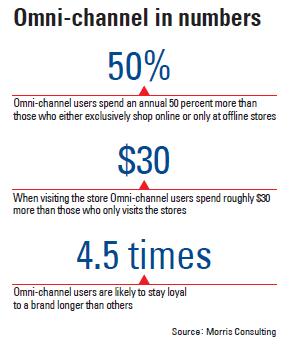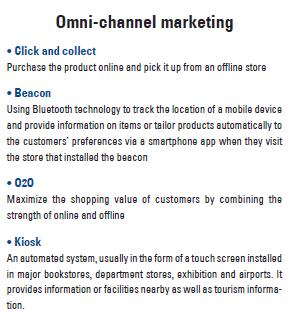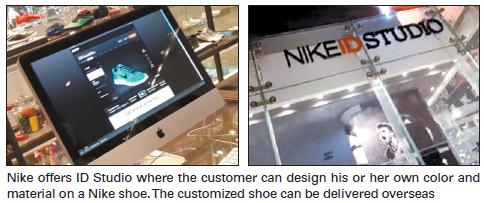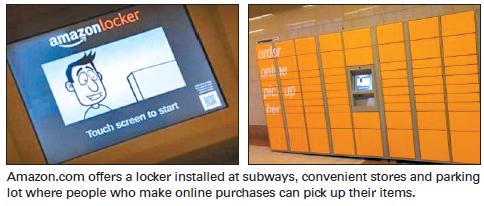Korean companies embrace omni-channel retailing

But she didn’t purchase it right away. She returned home, turned on her computer and logged on to several online shopping malls. She searched to find which one was offering the same dress for the cheapest price.
When Baek was about to pay for the dress, a pop-up appeared on screen, stating that a 5 percent discount was being offered if she made the payment through her mobile device.
The dress was retailing at 180,000 won ($158), allowing her to save 9,000 won.
Baek immediately took the smartphone out from her pocket and purchased the dress.

So what type of consumer category does Baek fit into? An online shopper, a mobile shopper or a traditional shopper?
Retailers used to put a lot of emphasis on analyzing the shopping preferences of customers so they could come up with marketing to meet those demands.
“But trying to categorize the way we did in the past no longer has meaning,” said Lee Wan-shin, head of the marketing department at Lotte Department Store.
With the development of information and communication technology, the era of “omni-channel retailing,” which allows shopping to take place regardless of time and space, has been expanding.

Omni-channel retailing is an ecosystem where the customer can enjoy shopping smoothly by connecting online, offline, mobile, TV home shopping and kiosk or self-service stations as well as call centers.
Retailers today have no other choice but to expand their omni-channel services as the use of the Internet and smartphones have become routine in daily life, allowing customers to make purchases through various retail channels.
In fact, as economic stagnation continues, many consumers have tightened their purse strings. But using the omni-channel retailing route attracts consumers into spending.
It has already been proven that omni-channel retailing contributes to improving revenue.
On Feb. 24, IBM held a Solution Connect 2015 conference in Dongdaemun District, downtown Seoul.
At the event Lee Yong-ho, who heads IBM Korea’s commerce business department, said those who use omni-channel retailing spend roughly 50 percent more annually compared to consumers who only visit either online malls or offline stores. They even spend $30 more than non-omni-channel users when they visit offline stores. Lee said the omni-channel users also remain loyal customers for 4.5 times longer than other customers.

“Eventually, a business will have to attract customers by properly mixing both offline and online,” Park said.
How global companies do it
International retailers were the first to adopt the omni-channel tool. Macy’s recently even hired a COO who specializes in this type of shopping.
The U.S. retailer, in a strategic partnership with smartphone app developer Shopkick, offers consumers who walk into Macy’s discounts and special events.
Additionally, as there are chips installed on the products at Macy’s branches, the employees can check the inventory immediately through mobile devices to restock products.

According to Walmart, customers who use the app visit the store more frequently than those who do not and spend 40 percent more.
Ikea, which opened its first store in Korea last year, has a “design your home” service that allows customers to arrange furniture virtually online. Using this data, the company then provides tailored marketing. Customers can also check if the items or products they are seeking are available through their smartphone or PCs before heading to the store.
Local companies embrace omni channels
Among Korean companies, Lotte Group is the most enthusiastic about establishing omni-channel retailing. Shin Dong-bin, Lotte Group Chairman, recently said during a meeting with the CEOs of the conglomerate’s affiliates that once the Korean retail giant’s omni-channels succeed, it will gain competitiveness that is equivalent to major global retailers such as Amazon.com.
Lotte Department Store’s main branch in Myeong-dong, central Seoul, is running a “pick-up desk” that allows consumers who purchased goods online to visit the store and take them home. This allows buyers to pick the purchase items more conveniently. The service started operating last November.
The retailer is also running a “smart beacon service” that provides shopping information, including special events and discount coupons, to customers according to the location they are in. Lotte has a plan to expand the service to its other stores, too.
The conservative financial industry is also taking an interest in omni-channel marketing. Shinhan Bank started an electronic filing service (EFS) last month. The bank has raised its work efficiency by allowing customers visiting the bank to file necessary documents through a tablet PC while they wait their turn.
The bank has made it easy to subscribe to financial products through omni-channel services.
The Korean fashion brand MCM runs an M5 service. The potential customer, when flipping through a magazine or watching an advertisement, can get more information about the product by punching in the five-digit number printed next to the product on the magazine page or on the ad on the smartphone.
When buying the item via smartphone they can either pick it up at the store or they can have it delivered the day they made the purchase. The delivery, however, is only provided in Seoul and a few neighborhoods in Gyeonggi.
Lee Ji-young, an executive at the digital group Accenture Korea, said online to offline, or O2O, is the most important among omni-channel retailing options. This is a form of retail marketing that draws customers online and then sends them to offline stores. For example it is a marketing system that provides information that is tailored to customers’ preferences and directs them to the store nearby.
“The digital convergence will provide a growth opportunity for companies that are prepared,” said Lee. “The key is for companies to recognize that they need to fit the omni-channel strategy and boldly execute it.”
BY LEE SO-AH [lee.hojeong@joongang.co.kr]










with the Korea JoongAng Daily
To write comments, please log in to one of the accounts.
Standards Board Policy (0/250자)